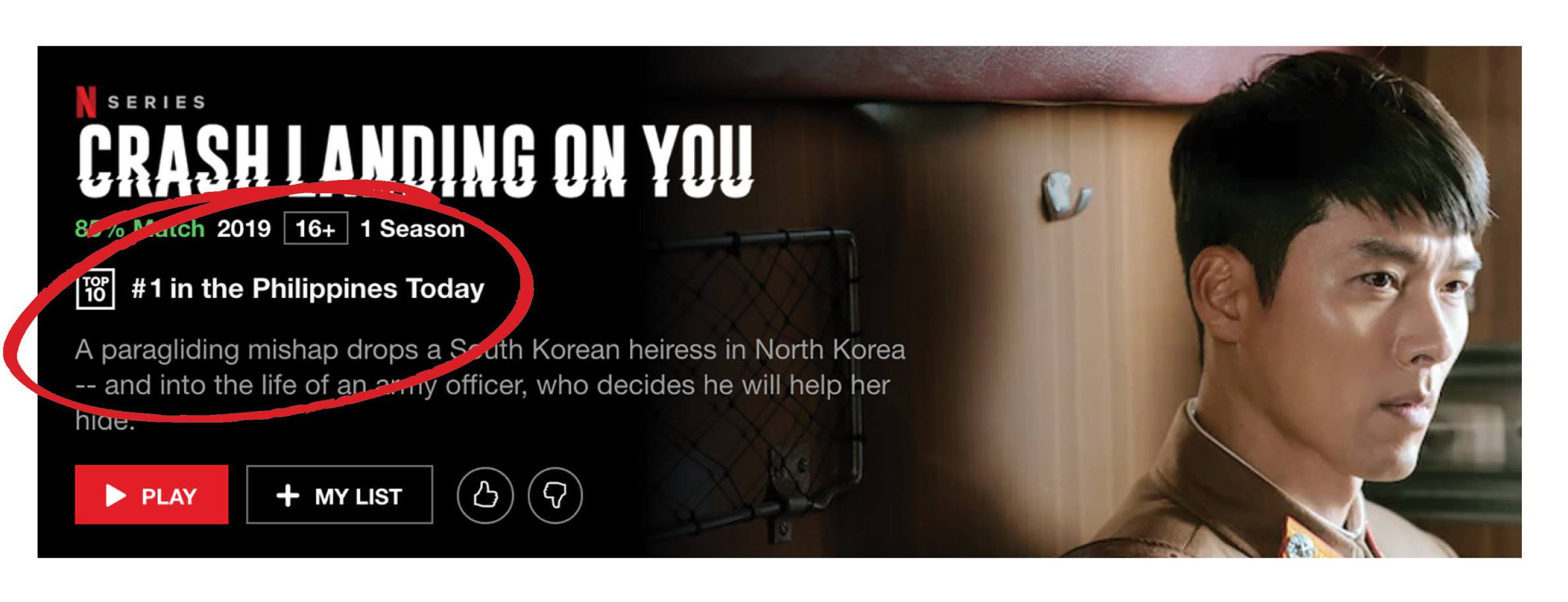By Hermes Joy Tunac
The love story of a billionaire heiress Yoon Se-ri (Son Ye-jin) and North Korean army officer Ri Jeong-hyeok (Hyun Bin), Crash Landing on You is, without a doubt, the most talked-about Korean drama series to hit Philippine shores in recent years. And yes, there’s more to its success than what meets the eye.

CLOY, as its legions of fans would lovingly call it, may have concluded earlier this year, but it looks like the craze over the #RiRi love team is here to stay. Yes, the second highest-rated show in Korean TV cable history, according to Nielsen Korea, most certainly has legs.
In the Philippines, the hit K-Drama series consistently remains on the Top 10 list of most-watched shows on Netflix. Even some viewers who have never seen a single episode of K-drama in the past, have been transformed by this show into newly minted binge-watchers. So what is it with CLOY that makes it such a hit?
PeopleAsia editor-in-chief Joanne Rae Ramirez, a K-drama newbie who found herself head over heels with CLOY, thinks that the series made waves because it didn’t reveal all its aces at once. In her Philippine STAR column titled “Crash landing on you, again,” she writes, “The series stretches the anticipation of the viewer like a rubber band — stretches it, and stretches it, and just before it snaps, comes the moment of truth.”
There’s also some science to CLOY and its formula. Michael Andrada, a journalist and professor from the University of the Philippines-Diliman who specializes in Philippine Studies and Literature says that the Filipinos’ romantic sensibilities are ultra-receptive to the tradition the series portrays.
“Much of what viewers see in CLOY is the romantic tradition. It is not hard to fall in love with the main characters. It is easy to follow the plot. Because of these reasons, the show becomes a romantic pursuit for viewers, effectively making them one with the characters on the show,” he says.
The connection doesn’t end with Captain Ri and his oh-so-chiseled jaw either. K-Dramas, in general, have a tendency to resound with many Filipino viewers for a variety of other reasons. While CLOY, is, arguably the biggest hit, it follows a long line of successful K-Dramas that have gained popularity in the Philippines in the past couple of decades. Among them are Full House, Boys over Flowers, and even movies such as My Sassy Girl, to name a few.
On the other hand, newly converted K-Drama fan Bianca Isabel Aquino shares that one of the reasons why CLOY made its mark on her is through the excellent portrayal of characters. “Captain Ri possesses a modern prince charming vibe that most girls dream of nowadays. Apart from showing dedication and commitment to the military, he is also musically inclined which makes him even more attractive. The lengths he took for Yoon Se-Ri also made my heart trembles. No wonder he’s a real knight in shining armor,” tells Bia.
Meanwhile, Rhianne Rae Raval expresses her deep appreciation of how K-Drama plots are written. “Aside from the good looking cast, it quickly became a hit because of the great plot twist—North Korea. And it’s not just about them falling in love. It’s also about their relationship with their families and their own struggles and the cultural differences between North and South Korea,” shares Rhianne.
Earl Rodil, a member of UP Arirang, the premier Korean-Filipino friendship organization of UP Diliman, says that K-dramas are also social media gold, thanks to their fashionable leads, good-looking ensemble and quotable quotes. This allows titles such as CLOY to amass a substantial following, even well beyond South Korea. “The Korean series gains more popularity when people talk about their thoughts and opinions on the Internet. Even non-viewers get curious about the buzz and eventually check what it’s all about,” says Earl.
From a technical perspective, seasoned director Jose Javier Reyes says that scripts of K-dramas are always well-written and well thought of. The substantial content is also transformed into visually stunning images, once the director plays his or her hand. “K-dramas are what they are meant to be—materials that are meant to make you cry, but never to the extent of going over the top or squeezing a scene dry to bring about emotional impact,” the director shares on his blog.
He also adds that there’s a certain restraint in the way scenes are written so that the impact of a sequence is achieved not by words alone, but through its visuals. And altogether, these elements make K-dramas so palatable to the local masses.
You can now read PeopleAsia‘s May 2020 issue through this link.





